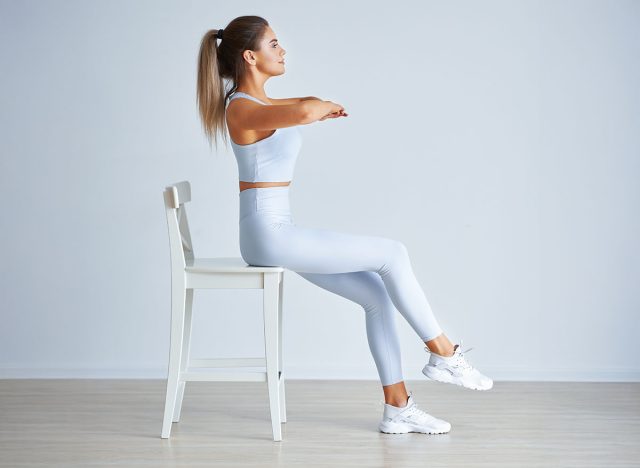This 8-Minute Seated Routine Strengthens Your Core Better Than 30 Minutes of Planks After 50

Core strength after 50 requires smarter training, not longer sessions. Planks feel productive, but holding your body in a rigid position often shifts pressure from your abs to your wrists, shoulders, and lower back. A seated routine delivers cleaner alignment so your core muscles stay active through every second, without the strain that usually comes with floor-based work. With your hips supported and your spine upright, your deep core generates more tension, helping you build strength safely and consistently.
People over 50 benefit most from movements that use rotation, controlled lifting, and smooth bracing rather than static holds. This routine challenges your midsection through motion, forcing the stabilizers around your spine and waistline to stay switched on the entire time. These muscles influence posture, balance, and real-world power, giving your body a firmer, more athletic feel with every session. By staying seated, you eliminate unnecessary stress on the joints and focus the effort exactly where it matters.
Eight minutes might sound modest, but the uninterrupted tension transforms this routine into a powerful core builder. Each movement transitions seamlessly into the next, keeping your abs working from multiple angles without ever losing connection or control. By the time the routine ends, you’ll feel activation deep through your lower abs, obliques, and spinal stabilizers, the areas floor planks tend to miss. Stick with this format several times a week, and you’ll build a midsection that feels stronger, steadier, and far more supported in everything you do.
The Complete 8-Minute Routine (Broken Down by Exercise)
0:00–2:00 — Seated Knee Lifts
- Sit tall on the front edge of your chair, hands lightly on the sides.
- Lift one knee toward your chest while keeping your spine long and your ribs pulled down.
- Alternate legs in a controlled rhythm to activate the lower abs and improve hip stability.
- Keep your core braced so the lift comes from your midsection, not momentum.
2:00–4:00 — Seated Twist Reach
- Sit upright with feet planted and arms extended in front of you.
- Rotate your torso slowly to one side and reach your hands toward the outside of your knee.
- Come back to center and repeat to the other side without leaning backward.
- Maintain tall posture so the rotation sharpens your oblique engagement.
4:00–6:00 — Seated Leg Extensions

- Sit tall and extend one leg straight out while tightening your abs.
- Hold briefly, lower with control, and alternate sides in a smooth pattern.
- Keep your core active so your pelvis stays steady instead of tipping back.
- Focus on lifting through your lower abs rather than locking out your knee.
6:00–8:00 — Seated Crunch Pulls
- Sit upright, arms crossed in front of you.
- Pull your elbows downward towards your legs.
- Return to the start and repeat.
- Keep your core tight through the entire movement to finish with deep activation.
What Your Results Mean

If you complete all eight minutes with steady form, smooth breathing, and constant core tension, you’re performing at a level that exceeds most adults after 50. Your midsection isn’t just strong, it’s stable, coordinated, and capable of supporting you through daily movement with less fatigue and strain. If you find your posture collapsing or your back working too hard, take it as information rather than failure. With regular practice, your deep core strength will rise quickly.
How to Improve Your Performance

Start by reinforcing your alignment: sit tall, draw your ribs downward, and brace your abs before each rep. Slow the movements until your core, not your shoulders or hips, drives every action. Increase the challenge by lifting your knees higher, reaching farther, or extending your legs longer while keeping perfect control. Repeat this routine several times a week, and you’ll notice stronger bracing, cleaner rotation, and a firmer, more responsive core within weeks.